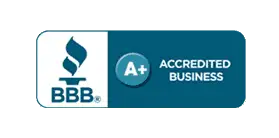If you’re planning a bankruptcy or even in the midst of one, it’s important to know what’s ahead and get a grasp of the time left before your discharge. Most people see their Chapter 7 bankruptcy discharged between 82-102 days. Here are the 10 steps for filing a Chapter 7 bankruptcy and seeing your debt eliminated:
Step One: Getting Things in Order.
You will need to get together all your bills, bank statements, retirement information, pay stubs, tax returns, and investment information. This, together with an initial consultation, gives your attorney the best overview of your financial situation and the best plan of attacking your debt.
Step Two: Fill Out the Paperwork.
Your attorney uses your financial information to fill out official bankruptcy forms. While this may sound simple, most Chapter 7 forms are between 35 to 50 pages long. Because the form is so extensive and asset exceptions are tailored on a case-by-case basis, it is vital to have a knowledgeable bankruptcy attorney who is local and understands local laws and resources.
Step Three: Take Debt Counseling Courses.
To get a Chapter 7 bankruptcy, you will most likely need to go through a credit counseling course. Only businesses can avoid taking debt counseling courses – not consumers who are filing for bankruptcy. Thankfully, they are offered online and most individuals can get through them in a few hours.
Step Four: Filing the Bankruptcy Paperwork.
Your bankruptcy forms will need to be filed along with the certificate of completion from your credit counseling course. This is all submitted to bankruptcy court along with a filing fee (which is around $400). If you can’t cover the fee, you may be able to have it waived or apply for a zero-down bankruptcy plan that works it out in payments through a law firm like Sadek Bankruptcy Law Offices.
Step Five: Creditors are Notified.
After your forms are submitted to the court, within a few days the courts will then begin to notify your creditors that you are filing for bankruptcy. The courts provide a date for a 341. The 341 meeting is an opportunity for the bankruptcy trustee and creditors to address the debtor directly about their bankruptcy case. This meeting will be scheduled at least three weeks later, but no longer than 40 days after you filed for bankruptcy.
Step Six: Take a Debtor Education Course.
After your case has been filed, you will need to take a debtor education course. This can be done immediately after filing and you receive your case number. The course must be completed and your certificate filed with the courts within 60 days of your first 341 meeting.
Step Seven: Submit Your 521 Documents.
All your financial information must then be resubmitted to a bankruptcy trustee who oversees your case. This must be done at least seven days before your first 341 meeting.
Step Eight: Attending a 341 Meeting.
When it comes time for your 341 meeting of creditors, you will need to attend and provide more information about your case. The meeting is an opportunity for the bankruptcy trustee and creditors to question the debtor under oath regarding their assets, liabilities, and other matters that pertain to their bankruptcy case – which is why it is vital to have a trusted bankruptcy lawyer to advocate for you in your unique case. While this can sound frightening, with the help of an experienced bankruptcy lawyer it is usually an easy process that only takes around ten minutes to complete.
Step Nine: Creditor Objection Deadline.
After the first 341 meeting, your creditors have 60 days within which they can object to the courts doing away with the debt they are owed. This is a waiting game as the courts can’t move forward until the 60 days are up. This tends to be the most lengthy aspect of the 4-6 month bankruptcy process.
Step Ten: Your Case is Discharged.
Once the 60 days have passed and no creditors have objected to your bankruptcy, the courts will then discharge your debt. You can expect to get a copy of your case discharge within a few days.
As you can see, a Chapter 7 bankruptcy involves several steps but is still a straightforward and fast way to get out of debt. Thanks to Chapter 7, you can see your debt load gone in a short period of time and can start moving forward. Contact a lawyer to talk over your particular case and discover how long a Chapter 7 bankruptcy would last for you!





